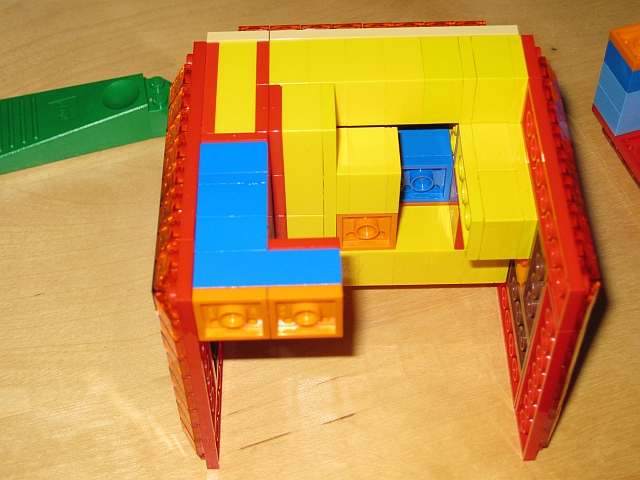Previously I had completed the prototype and after a little trial and error refined things to a point where I was happy with the results and had glued everything together.

So I was happy, but was it a good puzzle? This is where I turned to my puzzling friends and gave them the puzzle in its solved, locked form. I should probably say something about the locking mechanism. As I described in my original post, I had two ideas for how to ‘lock’ the cube once it was put together and prevent the sides from falling out. My initial design is a simpler version which uses a free floating internal component to ‘lock’ the last side in place. It’s a simple mechanism which uses the puzzle orientation to lock or free the last side.
So having the puzzle completed, and the lock in place, I gave it to a friend to try. I had spoken with him as I was creating the puzzle, so he knew the basic idea, but not much more. When he came back, he hadn’t fully opened the puzzle, as he wasn’t sure whether I wanted him to or not. What was interesting was that by half opening the first side, it allowed the internal lock to move to a different location in the puzzle. So you could think of that as a flaw, however it was interesting as it changed the way the first piece was removed. Interesting and unintended, but shows how things don’t always behave the way you intended.
The feedback from my friend on the puzzle was positive, and most people who have seen it really like the Lego ‘pattern’ on the outside faces. So I’m happy, and now I’m left with the decision to move the prototype to wood.
I am excited to do this, as it allows me to take the first design and make it truly robust, but also it will allow me to make version two, with the rotational lock and have two versions of the puzzle, by replacing a couple of sides. That’s a fun idea for me as it means I can modify the puzzle while the external look would be identical.
Next step, pencils and rulers at the ready to get started in wood.
